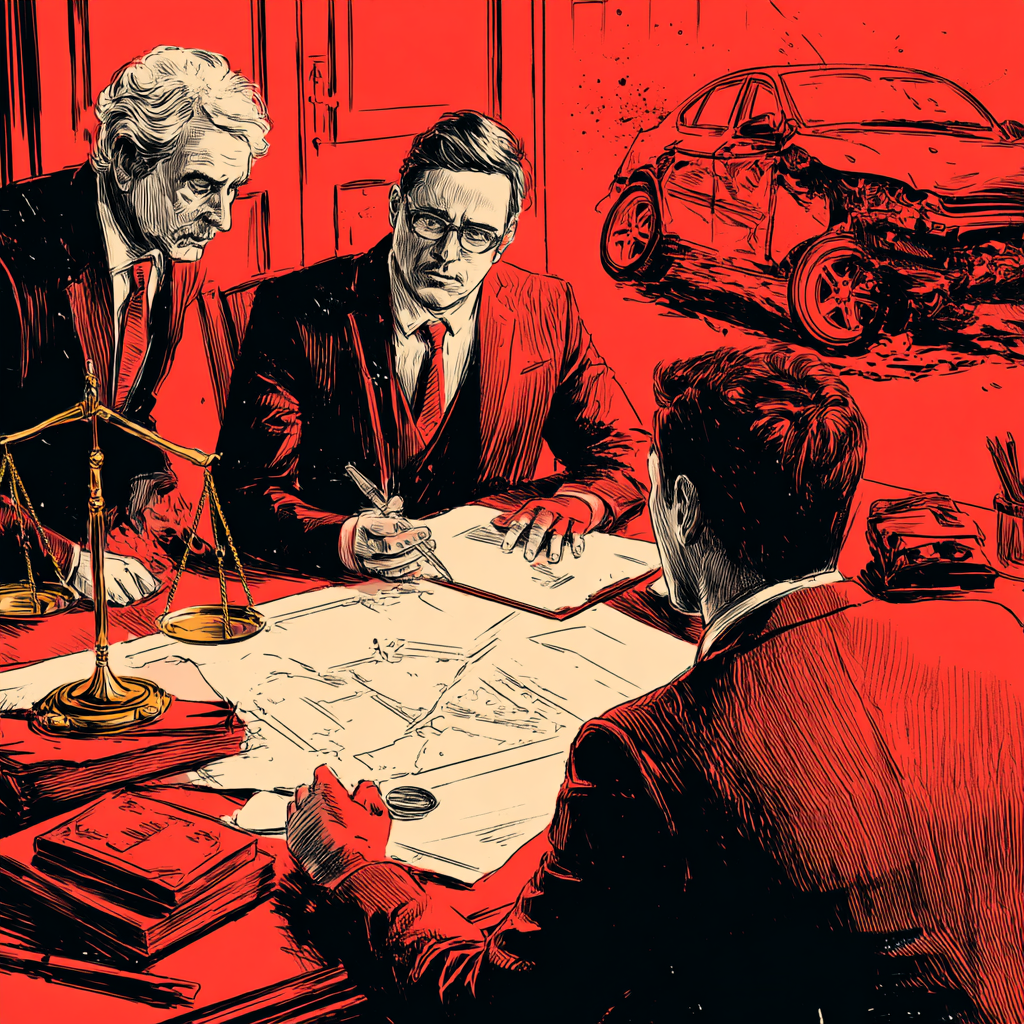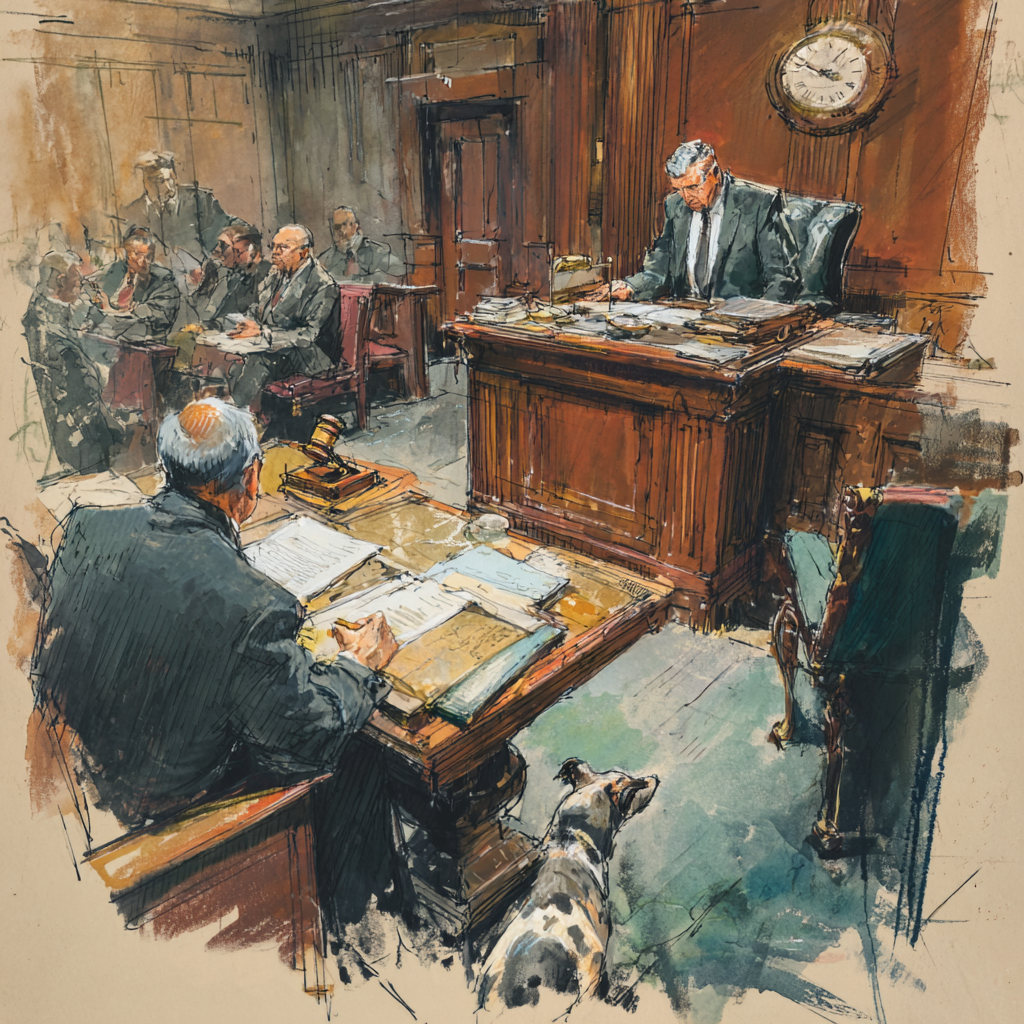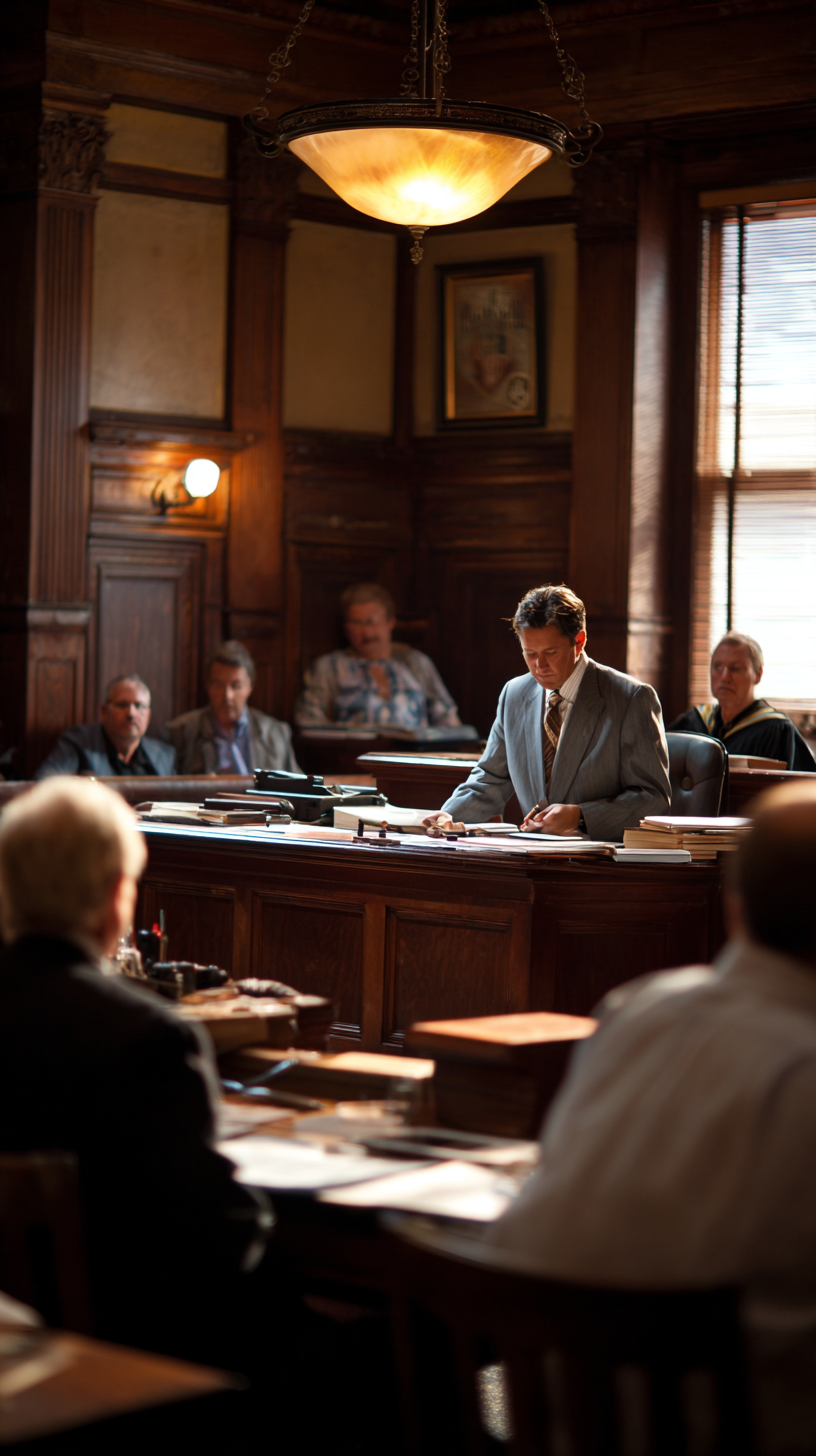Matter of Carothers v GEICO Indem. Co. 2010 NY Slip Op 09256 (2d Dept. 2010)
“The testimony of an employee of the company that handled the plaintiff’s medical billing was insufficient to lay a foundation for the admission of the claim forms under the business records exception of the hearsay rule (see Art of Healing Medicine, P.C. v Travelers Home & Mar. Ins. Co., 55 AD3d 644)…. Since the subject documents were inadmissible, the plaintiff failed to establish its prima facie case, and the Appellate Term properly reversed the judgment in the plaintiff’s favor.”
You often have to wonder why the courts cannot be consistent on some issues, especially those that impact tens of millions of dollars of claims every year. This prima facie issue is one of them. I recall after Art of Healing was published, the same Appellate Division in numerous Henig Hospital cases found the existence of a prima facie case through merely the submission of a bill. A review of any of Henig’s papers will show less of a foundation than what was probably found in the record in the above Carothers matter.
Maybe there is a separate prima facie rule for hospitals, as opposed to medical providers?
I think the answer to this riddle will some day have to be decided by the Court of Appeals. Yet, what is to stop the Court of Appeals from adopting the majority approach and requiring affirmative proof of medical necessity and causation as part of a prima facie case? I think the Plaintiffs bar is walking on coals when seeking further redress on this issue.










26 Responses
My instinct is that the Plaintiff did not raise the main prima facie arguments in the lower courts allowing the App Div to punt the issue because it was “unpreserved for appellate review.”
Slick is right. The scope of Plaintiff’s papers was limited. Appellate counsel for Plaintiff never heard of Art of Healing. Art of Healing was pretty limited as well. After watching oral argument, I was sure this decision would be far worse than it is. The whole “must be a business record thing” cant be reconciled with Fair Price, as far as I can tell.
This is the correct way to hold. And it is not earth shatterring. The third party billing company can still establish a prima facie case very simply. The Court points out how. It is an easy foundation.
If you are a third party biller you are 1) definitely storing and maintaining the bills as part of your records and 2) you are relying on them in the ordinary course of business in order to perform you duties.
That’s the points. Flesh it out a little. Every part of the chain is you and your employees business duty. How you get the bills. What you do with them once you get them. Where they are stored. How are they stored. Who maintains them — employees with a business duty to do such.
You rely on them because you are a billing company. It is your business to submit bills in a timely fashion according to the no fault law. Without these bills you could not perform your business duties because you could not submit bills.
The bill is in — according to the law.
Of course you do your mailing routine. You testify when the bill was mailed. You use your postal manifest, etc. — the whole business doc routine.
And of course the bill was never paid. You can get fancy with this too very easily especially since it is the business of the bill sender to collect and they will notate collection or lack thereof in THEIR business records.
Reliability is based upon repetition which in turn is based upon routine business practices. “We do it this way everyday.”
“majority approach and requiring affirmative proof of medical necessity and causation as part of a prima facie case?”
The other States you allude to don’t have the NY State No-Fault statutory scheme.
What’s the point of the verification procedure and 30 day rule assuming the provider has to prove up his case just as if the no-fault statutory scheme did not exist?
In your vision, the only purpose of the No-Fault “claims procedure” is to provide a hurdle to benefit recovery, in addition to lodging a full court action on the bills requiring expert and foundation testimony to prove up.
If you can require the claimant to attend numerous duplicative examinations and ebt’s and shoulder great expenses regarding small first-party claims, you can kill lots of meritoreous claims.
I would gather other industries would want such a bar as well– why not require all consumers to navigate “claim procedures” before they can sue on their contracts or personal injuries? Think of how much benefit this would be to a handfull of people in Wall Street, big Pharm, and the energy industry.
Of course, under Montgomery vs. Daniels, such a scheme would be unconstitutional.
I believe many states have something similar to our no-fault scheme. In Florida you have 30-days to pay or deny and are entitled to seek verification. Michigan is the same. In New Jersey you have 60-days to pay or deny, and are entitled to seek verification. All of these states have the above-stated prima facie requirements and do not impose the preclusion sanction.
The only difference between the judicial interpretation and only the judicial interpretation of the above state statutes and our statute is that New York, both in no-fault and 3420 liability coverage cases applies a preclusion rule. However, no-fault has built in interest penalties (albeit they are tolled until commencement of an action/arbitration) and a built in attorney fee (albeit it is not hourly but can abused even post LMK). Ins Law 3420 actions do not have built in attorney fees, unless the individual is defending on an insurance carrier initiated DJ, and even this is a judicially crafted rule.
Compare this to a no-fault’s attorney fee penalty, which is statutory and regulatory. I am not sure the Court of Appeals would necessarily follow the Appellate Divisions’ definition of a prima facie case.
But who knows anymore? I honestly thought Art of Healing would be tossed. Art of Healing and this decision are illogical and do not make sense. Either tell us whether we are going to remain a minority PIP state or that we will become a majority PIP state. Perhaps the mantra “expect the unexpected” should define the world of PIP recovery in New York.
I actually think this holding great for Plaintiffs that use third-party billers, especially given that the procedure used by Carothers (where the medical office would generate the NF-3 instead of the biller) is an anomaly. Every other provider that I’ve encountered that uses third-party billers has it that the NF-3s are created by the billing company based on records provided by the medical office.
In contrast to other Appellate Term cases, the Appellate Division now holds that “a proper foundation CAN be established by a recipient of records who does not have personal knowledge of the maker’s business practices and procedures.” (Emphasis mine). What’s required is either that billing company incorporates the information into their own records OR that the information is relied upon for daily operations. Ray’s got it right.
For more thoughts, see my post: http://nynofaultlaw.blogspot.com/2010/12/how-do-you-spell-pyrrhic-victory.html
How does one: “either incorporate[] the records into its own records or relied upon the records in its day-to-day operations”. Give me a definitive business model that satisfied this standard. What type of showing is necessary to satisfy this test? Do I put CPT routing slips into my scanner, create a pdf, place it into an electronic database, email it to my billing company, where they generate a bill with this information? Is that sufficient? I am serious when I say I do not know what is required. I do not know what “incorporat[ing] records” means. I also do not know what “relying upon the records in its day-to day operations.” And, these are prerequisites as a matter of law, not incidents that go to the weight of the document. I wouldn’t smile about this case, because it is subject to many interpretations.
By the way – glad to you see you have began to blog again. All of us here were getting worried.
There is no question that this case is good for Plaintiffs. As stated in an earlier post, the significant thing about this ruling is that the court held that personal knowledge is not required to lay a foundation. That was always the issue for my third party billing cases at trial, because several judges held that personal knowledge is the ONLY way to lay a foundation. Now that is clearly not the case. Also important is that the billing company must merely prove that it incorporates the information into their own records OR that the information is relied upon for daily operations. That “OR” is a big deal. Even taken together, those two burdens are not a difficult standard to meet considering the very nature of a billing company. Taken separately, there should be no trouble at all in front of any judge worth his/her salt.
J.T. this is as easy. The analysis in the scenario presented by Mr. Toell is to simple to have to explain. If you receive the bills from the medical provider it is still simple.
XYZ Billers is in the business of submitting bills for medical providers. If you want get fancy you describe how XYZ submits bills pursuant to the laws and regulations governing no fault. One of XYZ’s clients is Crack Back Chiro. XYZ describes how it receives the bills and other information — supporting docs like reports and notes from Crack Back. It certainly can be electronically. XYZ describes how these docs are stored and maintained.
Just keep the business duty all throughout the above chain for XYZ and its employees.
XYZ relies on these bills in order to perform its business of timely submitting bills to insurance companies. The bills are the very items that are submitted. Without submission of the Bills XYZ could not collect money for Crack Back. Without the bills there would be nothing to timely submit.
There is no need for a J.T. magical incantation of reliance. It is so damn obvious. You just have to say it.
Go through mailing business docs etc as I laid out.
The bill is in evidence. If it is contested Richardson’s will tell you that it goes to weight and not admission into evidence.
Remember this goes to prima facie showing of mailing. If the insurance company feels a bill was late or not submitted or fake they have to make a showing. The bill is evidence but subject to attack on its credibility just like testimony about how an accident happened is in evidence but subject to attack.
J.T. you are really being unfair here. Do you see some of the insurance company affidavits — three of them at once — wherein denials are electronically sent out of state and then printed out and allegedly mailed.
Except the specific denial is never mentioned. The world is not the Appellate Term 2nd and the Second Department reminded us with the above decision. There are rules of evidence still being followed.
And the decision went against the provider in this case b/c someone forgot evidence.
As to what constitutes incorporation and reliance, one need only look at the cases cited by the Appellate Division. In People v. DiSalvo, 284 A.D.2d 547 (2d Dep’t, 2001), certain documents “were routinely relied upon by the County in making its invoicing determinations.” Relying on information from third-parties in making invoices constitutes sufficient reliance.
In Plymouth Rock Fuel Corp. v. Leucadia, Inc., 117 A.D.2d 727 (2d Dep’t, 1986), “the information contained in the delivery tickets was used in the preparation of the plaintiff’s invoices,” and therefore the “information that the truckers provided was thereby fully incorporated into the plaintiff’s records made in the regular course of business through the billing process.” Putting information from third-parties into invoices constitutes sufficient incorporation.
There’s no real mystery here. The making of NF-3s based on information received from medical offices should, in normal practice, constitute both reliance and incorporation.
Damin thanks for saving me the trouble. I am going to copy this string and store it for later use.
Ultimate thanks to J.T. for bringing this issue to light.
So if incorporation and reliance is the standard then all the records incorporated into the Insurance Company’s records and relied upon to make a business decision should then be admitted into evidence?
For example, medical records, police report, DMV records?
This is why I commented previously regarding what the heck the court meant by: “either incorporate[] the records into its own records or relied upon the records in its day-to-day operations”. You know that your example would never fly. Similarly, can a surgeon who incorporates MRI reports into his own records now introduce the MRI report into evidence? 4532-a issues? This is not happening. Anyway, this is why I am skeptical about this decision.
Citing Art of Healing for support– the Court’s own case that rules by edict, without discussion?
Gotta love the way the App. Div. dances around the issue regarding whether these records have to comply with CPLR 4518 in the first instance. Just like the Appellate Term.
An unstated element in the new Carothers decision is that the information provided to the third-party (and then incorporated and/or relied upon) must be provided by an entity with a business duty to provide such information. Since the NYPD, the DMV, etc., do not have a business duty to provide records to an insurer (that is, these entities are not “in business” with the insurer), such records would not be admissible under the incorporation/reliance standard. See Hochhauser v. Electric Ins. Co., 46 A.D.3d 174 (2d Dep’t, 2007).
JT as a defense consel, I am not that happy with the decision of the Appellate Division, Second Dept. in Carothers. While the Appellate Division affirmed the lower court and cited Art of Healing, the decision does leave plaintiff’s an opening to use third party billers to establish a prima facie case by bringing back the incorporation doctine. The Appellate Term in Carothers had effective killed the incorporation doctorine by overruling Pine Hollow although the exact language used is not that clear. The decision by the Apppellate Division means Pine Hollow is back. I had read the decisions from the Appellate Term, approximately 8 or 9 decisions since the first Carothers case, as holding that as a matter of law a medical provider cannot establish a prima facie case at trial or on summary judgment through a third-party biller. However, the decision by the Appellate Division is a step backward for the defense bar and leaves the issue open to debate. We will need to see how the Appellate Term decides subsequent cases in light of the new decision by the Appellate Division.
It is funny you mention Pine Hollow v. Progressive. I hate to ever talk about that case because Dave Barshay and myself duked that one out at the Appellate Term many years ago. Well, we all know what happened.
I understand your frustration about the incorporation doctrine. In my mind, it leaves a lot to be desired and is one step away from doing away with the business records rule. It is scary to see how low the bar has dropped to allow documents to be admitted into evidence with respect to the business record exception to the hearsay rule, notwithstanding Hochausser. Do you remember Standard Textile from the early 1980s? Read that case and then compare it to Carothers, West Valley 4 and Plymouth Rock.
As I have said before, I would rather the courts apply a straight Mary Immaculate formulation of prima facie, along with applying the majority rule as to the other elements of a prima facie case. I know Sun and some others disapprove of this formulation of “prima facie”, but I truly believe it makes more sense than continuing this bizarre business records approach, which seems to be intellectually dishonest.
I am not sure what you are saying. What is exactly intellectually dishonest? The Dan Medical line of cases or the incoporation doctrine.
I think Dan Medical is wrong. I always did. There was a point in the law – I know it was in my prima facie article – when the Appellate Division held that statements on the statutory claim form were relevant to a prima facie case, irrespective of whether resort was made to the verification protocol. It is just with the Appellate Division and the Court of Appeals having pretty much said it is the carriers’ responsibility to clarify any deficiency on a claim form under penalty of preclusion – no matter how glaring – I just do not see why the claim form needs to be placed into evidence. Again, I will keep saying this: I do not think that a prima facie case should only require some action or inaction regarding a claim form. It is absurd. Yet, if this what the courts are holding, then what is the purpose of the business record rule in relation to a prima facie case? Call it what it is and move on.
JT I am not sure what you mean. What is intellectually dishonest. The Dan Medical line of cases or the incorporation doctrine.
By the way, did you see the artilce that Jeff Siegel and I wrote that was in the law journal on December 20, 2010 dealing with the jurisprudence of the Appellate Term, 2nd Department.
I would wish you a merrry christmas, but as with all jews, my self included, you are probable going to go to the movies on Christmas day and eat Chinese food.
It was a very well written article, and thank you for the cite to my law journal article from two years ago.
I made it to bagel boss this morning before coming into the office. Needless to say, the line was out the door. Yes, General Tsos for me for the next few nights.
Happy holidays to you too.
JT
JT. You are referring to an artilce I wrote with Jill Lakin Shatz in the New York State Bar Journal. I also did an artilce with Jeffrey Siegel that was in the law journal on December 20, 2010, specifically dealing with case law in the Appellate Term,2nd Dept.
I do apologize. I just read it. It is ironic that the article came out right after the Appellate Division affirmed Carothers. Good job.
Jt. As I said before, I think that the Appellate Division decision is not that great for the defense. Although it upheld the Appellate Term, it arguably brought back Pinehollow and the incorporation doctrine.